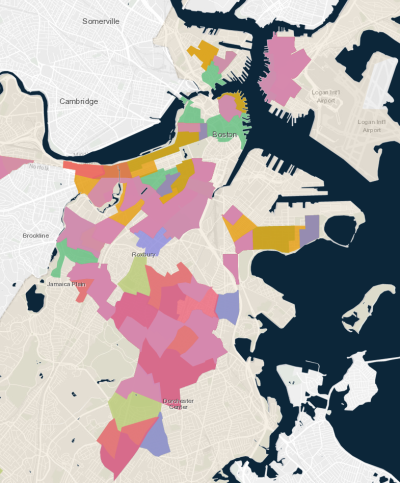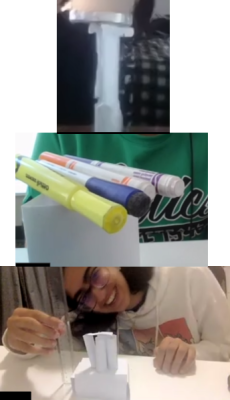Today, March 17th, we (virtually) visited Ms. McKinney’s fourth grade class (15 students) at the Charles Sumner Elementary School, learning all about Natural Disasters! Today, Hadeel and Karen led the field trip, with extra help by NU students Lauryn and Chris.
 Students started by learning about natural hazards/disasters and coming up with disaster plans (what to do before/during/after disasters) and emergency kits (what supplies to have during a future disaster). We split into two groups, one addressing hurricanes and one Earthquakes. Both groups had some great ideas, but here’s some things I really liked. Both groups mentioned checking in with others – making sure your friends and family are safe, but also those who are vulnerable. Boston has done a lot of preparing for helping socially vulnerable populations in disasters – there’s a pretty neat tool (see screenshot at right), made as part of Climate Ready Boston, that maps out Socially Vulnerable populations in Boston: http://arcg.is/GGPSW.
Students started by learning about natural hazards/disasters and coming up with disaster plans (what to do before/during/after disasters) and emergency kits (what supplies to have during a future disaster). We split into two groups, one addressing hurricanes and one Earthquakes. Both groups had some great ideas, but here’s some things I really liked. Both groups mentioned checking in with others – making sure your friends and family are safe, but also those who are vulnerable. Boston has done a lot of preparing for helping socially vulnerable populations in disasters – there’s a pretty neat tool (see screenshot at right), made as part of Climate Ready Boston, that maps out Socially Vulnerable populations in Boston: http://arcg.is/GGPSW.
Also, one student talked about cleaning up after natural disasters. This is actually a really complex task with lots of moving parts. For example, there’s the really morbid and gross part – dealing with the dead bodies, which is an actual job for some people (and the WHO’s field manual for dead bodies is over 50 pages long!). Then there’s the clean-up of damaged buildings and debris, as well as dealing with broken power and sewage lines, and lots of other things.
When we created our emergency kits, both groups talked about having non-perishables stock-piled: these are foods that last a long time and/or don’t go bad when the power goes out (i.e. no more fridge or freezer). It’s important to also note that you want to pick non-perishables that you can actually make without power – so avoid things you need to heat (and if it’s in a can, make sure you have a can opener). Check this list out of useful non-perishables to have ready for a disaster.
 After this, we did a civil engineering design challenge. In the real world, structures that are built near coastlines and areas prone to flooding, such as the Outer Banks in North Carolina, will often be built on stilts to allow water to pass underneath the structure without damaging it. We made similar structures, building towers to support as much weight as possible, using just 1 piece of paper and six inches of tape. A pretty tough challenge, but we had some cool towers! Students learned that triangles are a strong shape and support weight really well (article on triangles). In fact – you see them everywhere in architecture/civil engineering.
After this, we did a civil engineering design challenge. In the real world, structures that are built near coastlines and areas prone to flooding, such as the Outer Banks in North Carolina, will often be built on stilts to allow water to pass underneath the structure without damaging it. We made similar structures, building towers to support as much weight as possible, using just 1 piece of paper and six inches of tape. A pretty tough challenge, but we had some cool towers! Students learned that triangles are a strong shape and support weight really well (article on triangles). In fact – you see them everywhere in architecture/civil engineering.
After a quick break, students did a creative writing piece: students were given the task to write about a natural disaster and to express how they felt before, during, and/or after the disaster. Students were given lots of leeway in how to address this/express themselves, such as a story, a poem, drawings, or a song. Three students shared with the whole class (see below).

Lastly, we wrapped up with a STEM/College 101 panel. Students came with a great many questions (some examples below). One student asked a really interesting question: why go to college? Karen and Chris both shared their experiences as first generation college students, and gave some compelling arguments for college.

